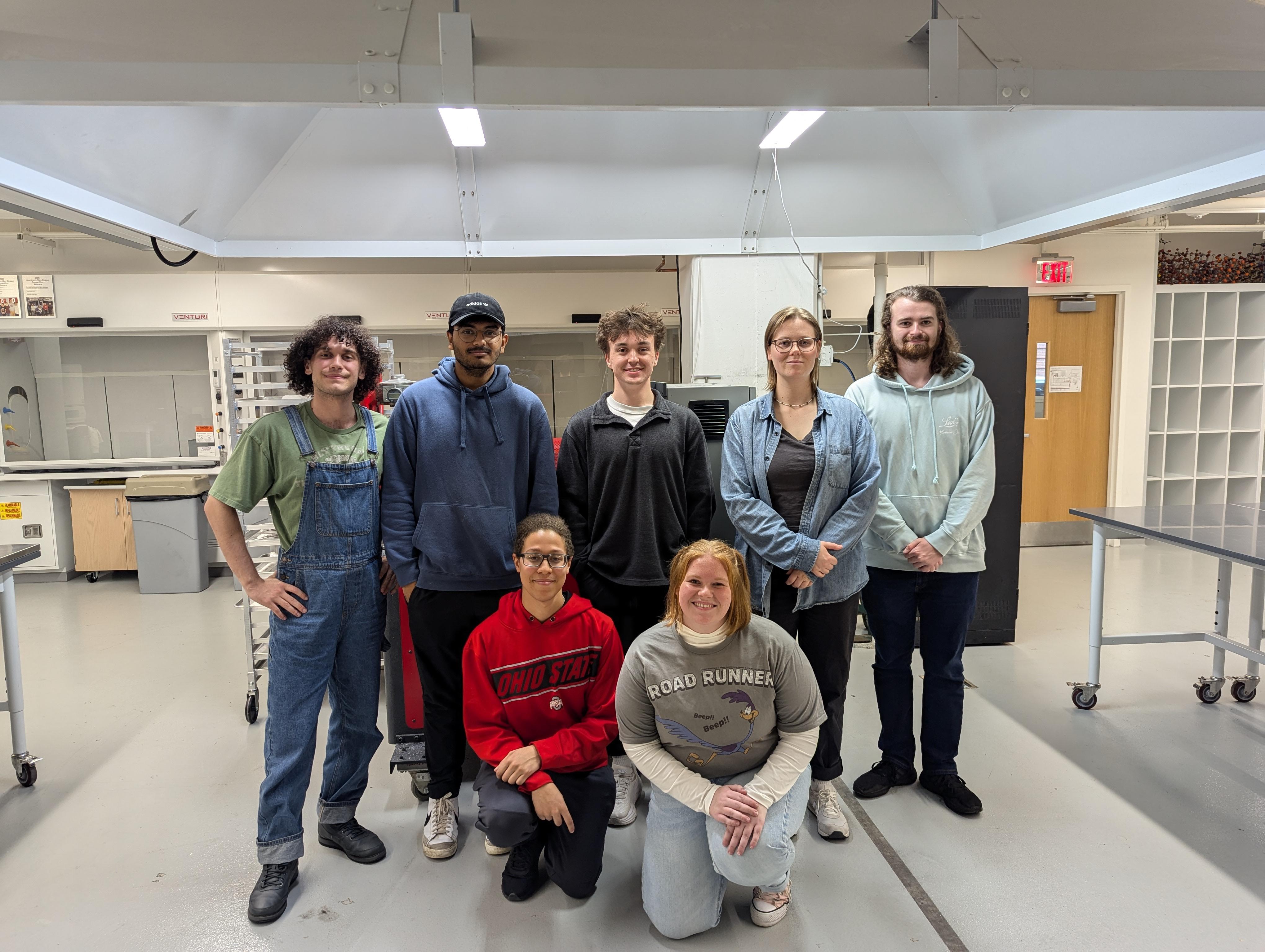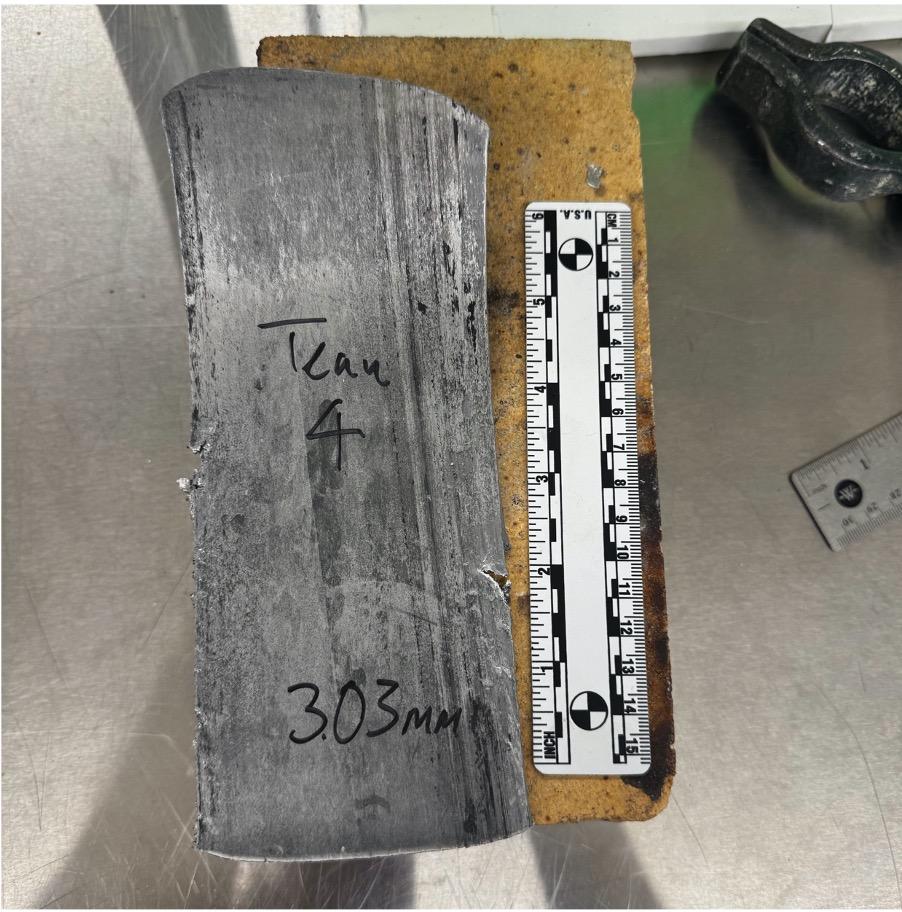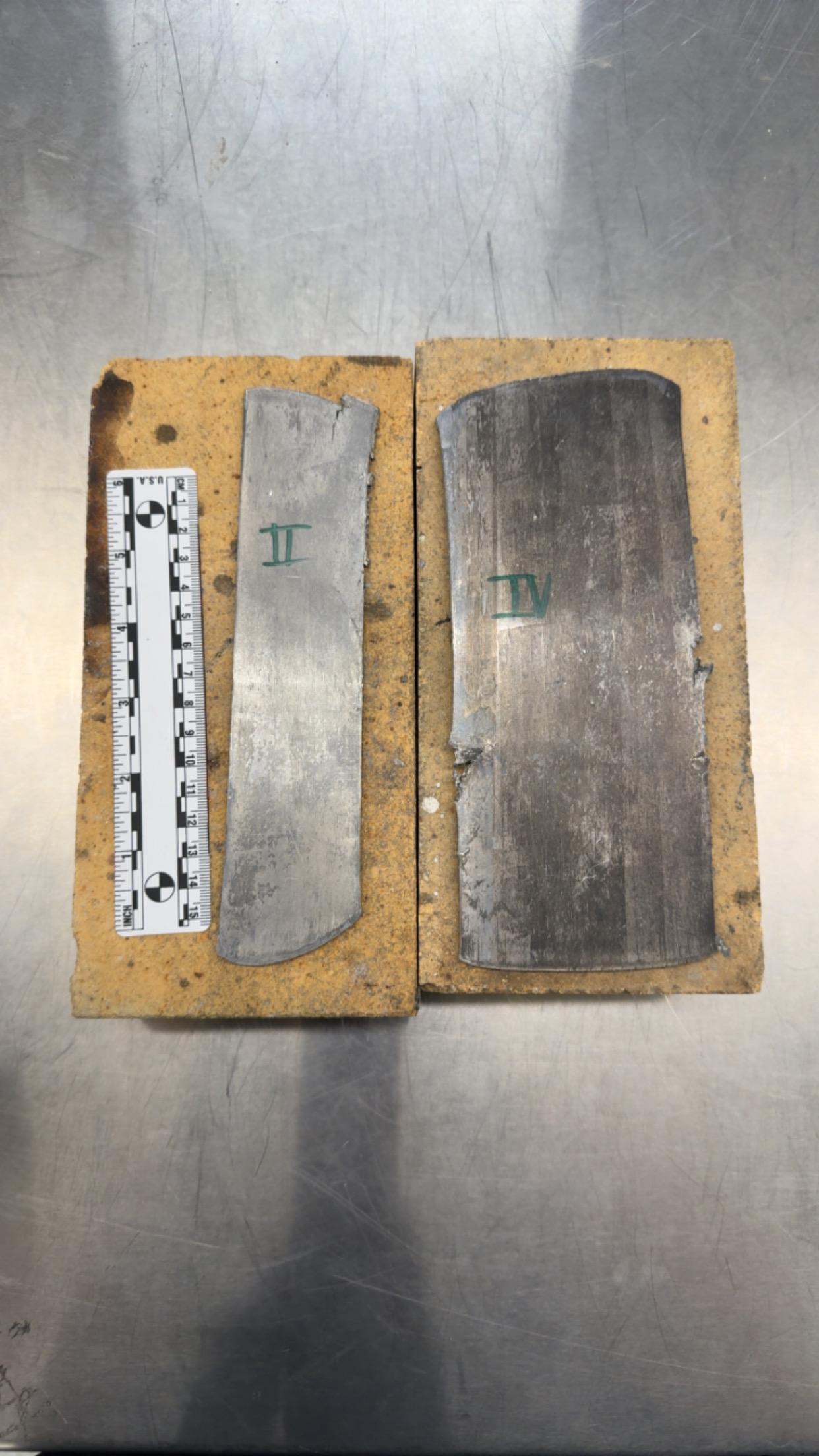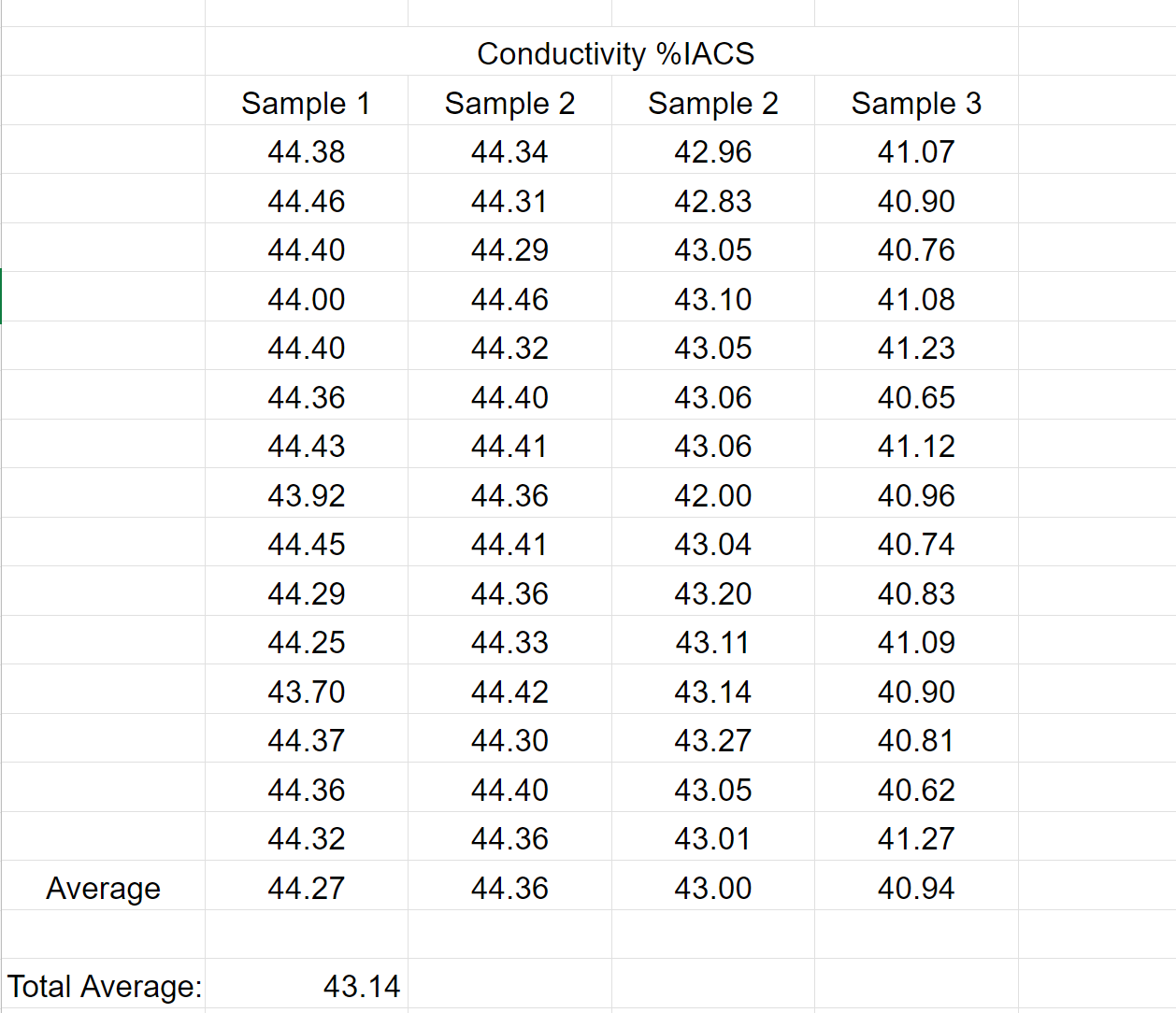2024 Aluminum Alloy Design Competition- Roadrunners (Team 4)
by roadrunners3331 in Workshop > Metalworking
109 Views, 0 Favorites, 0 Comments
2024 Aluminum Alloy Design Competition- Roadrunners (Team 4)

The purpose of this challenge was to design an aluminum alloy with the most desirable properties. The goal was to have the highest 0.2% offset yield strength, total elongation, and electrical conductivity. The alloy had to contain a minimum of 90% aluminum and could only contain copper, zinc, silicon, magnesium, iron, titanium, nickel, chromium, and manganese, in addition to the aluminum. The final thickness of the sample must be between 2 and 3 mm.
Supplies
Materials Available for Casting:
- Commercially Pure Aluminum
- 99.9% Copper
- 99.9% Zinc
- 50% Aluminum-50% Silicon alloy
- 50% Aluminum-50% Magnesium alloy
- 10% Iron in Aluminum
- 6% Titanium in Aluminum
- 20% Nickel in Aluminum
- 20% Chromium in Aluminum
- 60% Manganese-40% Aluminum alloy
Thermomechanical Processing Methods available:
- Rolling Mill
- Hot Rolling
- Cold Rolling
- Furnace
- Homogenization
- Annealing
- Solution Heat Treating
- Aging
Testing Methods Available:
- Rockwell Hardness Tester
- Electrical Conductivity Tester
- Tensile Tester
- Optical Microscope
Composition Selection

For this challange a custom alloy composition was selected. The reasoning for this decision was that comercially availible alloys were created to maximize different properties, but none of them maximized for the properties we were looking for while keeping in the restrains of the challange.
The alloy composition selected was partially based off several 6000 and 7000 Aluminum series alloys that had high values for elongation and conductivity. The decision for the composition selection was also based off literature that described how physical properties varied depending on the composition of alloys that would be viable for the competition. From these, it was decided that the final composition would be 94% Al, 2.4% Zn, 1.2% Mg, 1.1 % Cu, 0.75% Si, 0.4 Mn, and 0.15% Cr.
Thermomechanical Processing Selection
The goal during the making of this alloy was to maximize each property so no approximations of the final values were made. The alloy's composition was chosen with the thought of using TMP to build the hardness of the sample. Due to the composition being made up of a large percentage of alloys, using mechanical processes would not be the source of strength in the sample. Thus, thermal processes would be the sole contributors to the increase in hardness in the alloy.
To start, the sample was homogenized at 500ºC for 48 hours. The homogenization temperature was chosen by multiplying a rough weighted average of all of the target elements by 0.85 so they would enter the phase where atoms could diffuse but not have the sample itself get hot enough that the bonds would weaken and cause the sample to lose its shape. What is meant by "target elements" is the elements that would be able to melt before aluminum itself would become liquid, which was all but chromium and silicon. The homogenization period was chosen by comparison to similar alloys and using the time constraints enforced by the project. One day would have been too short in comparison to all other sources and the sample could have been taken out either after 2 or 4 days. 2 days was the closest to what has been experimentally confirmed is safe to process the alloy with so it was homogenized for 48 hours.
After homogenization comes rolling the sample. The options here are: skip rolling, cold roll, hot roll, or apply both. Further testing later down the process requires more surface area to make more testable samples so rolling was necessary. Hot rolling would affect the grains the least but cold rolling has been shown to increase strength in some samples. Originally, the plan was to hot roll half of the necessary thickness and cold roll the remainder but upon further reading, it was found that oriented grains would not help the hardness in this alloy's case, once again due to the amount of other elements present. In accordance with this information, the sample was hot rolled to the desired thickness.
Solution heat treating is when the sample started having more variation. After being cut into 4 different pieces, all samples were held at 470ºC, 2 of them for 1 hour, and the remaining 2 for 2 hours. 470ºC was chosen with a similar process to homogenization but using 0.55 of the melting temperature. Other alloys seemed to vary in the time they homogenized, with some variation between 1 and 2 hours. Fortunately, there were enough samples to allow for some experimentation.
Artificial aging was done at 125ºC, once again interpolating from research papers processing similar alloys. One set of samples were aged for 18 hours and the other set was aged for 24 hours. The time was chosen with similar logic to the temperature.
At the end of the process there were four differently processed samples: 1 hour solution heat treated and 18 hours aged, 1 hour solution heat treated and 24 hours aged, 2 hours heat treated and 18 hours aged, and 2 hours heat treated and 24 hours aged.
Casting and Homogenization




As the additive metals are not pure, they must be measured by weight so the excess aluminum can be calculated correctly. Before adding the additive metals the bulk aluminum was liquified. The additive metals ( 0.75% Si, 1.2% Mg 1.1 % Cu, 2.4% Zn, 0.15 Cr % 0.4 Mn) were slowly mixed in the crucible with a stir rod. The Zinc and Magnesium additives were wrapped in aluminum foil and pushed to the bottom of the crucible as they can react violently if exposed to oxygen in the surrounding air. Once all the elements were fully melted, a Road Runners team member poured the molten metals into a mold. Pictures of the final cast billet can be seen below. A small crack in the bottom of the billet was of concern but was cut out.
Mechanical Processing





After homogenization, hardness and conductivity tests were performed. Using a DC-2 conductivity instrument, the sample displayed an average hardness of 41.01% IACS, which is similar to the final conductivity (40.44% IACS). A HRB hardness test was attempted; however, the sample had a hardness value below the minimum B-scale threshold, so the test could not be conducted.
Once tested, the sample was cut into two parts for hot rolling. The two samples were hot rolled at 500°C with a target alloy thickness of 2.90mm. After multiple passthroughs, the samples reached a thickness of 5.00mm, and were cut into four pieces before reaching the target deformation. The final thicknesses of the samples were 2.76mm, 3.02mm, 3.03mm, and 2.92mm.
The goal of hot rolling was to efficiently reach the target thickness while increasing yield strength and maintaining ductility. Hot rolling also refines the microstructure by breaking down coarse grains and dissolving any segregation within the alloy, enhancing the alloys mechanical properties. Through hot rolling, the team also planned to decrease internal stresses, stabilizing the alloy for subsequent thermal processing. Lastly, in comparison to cold rolling, hot rollings elevated temperature requires fewer passthroughs to achieve the same deformation.
Solution Heat Treating and Artificial Aging


Following rolling, the samples were solution heat-treated and artificially aged. This was done for the dissolution of the precipitates as well as for hardening the sample. By heating up the alloy and holding it at a specific temperature, the less desirable precipitates begin to dissolve back into the solution. The solution is then heated to a specific temperature and quenched to keep the precipitates suspended in the solid solution.
All samples were solution heat treated at 470ºC, samples 1 and 2 were treated for 1 hour, whereas samples 3 and 4 and treated for 2 hours. After heat treating, all four samples were aged at 125°C. Samples 1 and 3 were aged for 20.9 hours while samples 2 and 4 were aged for 23.9 hours. This gave four different samples to be tested for consideration for final testing.
Testing




Each sample had its properties analyzed and measured in order to pick the most optimized properties for testing. Samples one (SHT for 1 hour and aged for 20.9 hours) and two (SHT for 1 hour and aged for 23.9 hours) had average hardness values of 11.95 and 17.23 respectively on an HRB scale. Since these samples were so soft, they were not considered for final testing. Samples three (SHT for 2 hours and aged for 20.9 hours) and four (SHT for 2 hours and aged for 23.9 hours) were moved on for tensile testing.
Sample three had an average hardness of 49.94 HRB, electrical conductivity of 43.00% IACS, yield strength of 235.3 MPa, and elongation of 10.3% during preliminary testing. Sample four had an average hardness of 63.74 HRB, electrical conductivity of 40.94% IACS, yield strength of 192.8 MPa, and elongation of 10.6% during preliminary testing. Due to the higher conductivity and yield strength, sample three was chosen for final testing.
Competition Sample


The team chose sample three out of the four different solution heat treating and aging samples as the competition sample. This sample was solution heat-treated for two hours and artificially aged for 20.9 hours. The sample had a final yield strength of 220.7 MPa, elongation of 10.2%, and electrical conductivity of 40.44% IACS. The yield strength of this sample during preliminary testing averaged 235.3 MPa, the elongation averaged 10.3%, and the conductivity averaged 43.00% IACS. The expected values from research were a yield strength of 370 MPa and an elongation of 13%. The yield strength was slightly lower than in preliminary testing but around the same. The percent elongation was about the same as the preliminary, and the conductivity was lower. Both yield strength and elongation were lower than the expected research values, however, since this alloy was not specifically modeled after any one specific alloy, it can be difficult to fully determine an expected value. The yield strength was 52% of the highest yield strength of all teams, the elongation was 82% of the highest, and the conductivity was 88% of the highest. Overall, this gave the highest total score, making it the alloy with the most desirable properties.
Summary and Recommendation
The team created an alloy with 94% Aluminum, 0.75% Silicon, 1.2% Magnesium, 1.1% Copper, 2.4% Zinc, 0.15% Chromium, and 0.4% Manganese. It was homogenized at 500 degrees Celcius for 48 hours. It was hot-rolled to around 3 mm. All samples were solution heat treated at 470 degrees Celsius. Two samples were heat treated for one hour and the others for two hours. Two samples (one heat-treated for one hour and one heat-treated for two) were artificially aged at 125 degrees Celcius for 20.9 hours and the other two were aged at 125 degrees Celcius for 23.9 hours. After preliminary testing, the team submitted the sample that was heat-treated for two hours and aged for 20.9 hours. The final measurements for the competition sample were a yield strength of 220.7 MPa, elongation of 10.2%, and electrical conductivity of 40.44% IACS.
During casting, the billet cracked due to the large amount of powdered chromium in the sample. If this alloy were recreated, chromium would be omitted or not used in a powdered form. Preliminary Testing also showed that the samples that were solution heat treated for one hour were abnormally soft. The team would choose to solution heat-treat for at least two hours, if not more. Finally, one sample had a large inconsistency in the tensile bar, causing premature breaking. If recreated, homogenization time would be increased.
Sources
Wang, J. Research Status and Prospective Properties of the Al-Zn-Mg-Cu Series Aluminum Alloys. Metals. 2023
Patel, N., Pradhan, A.K. Mechanical Properties, Thermal Properties and Microstructure of Heat-Treated Al-Zn-Mg-x%Cu (0.02 wt% Cu and 0.89 wt% Cu) Alloy. Inter Metalcast, 2024
Chemingui, M. & Fethi, Benkhenafou & Khitouni, Mohamed & Jozwiak, Karol & Mesmacque, Gérard & Shi, MingQuan & Douadji, Lyes. Effect of heat treatment on microstructure, hardening and plasticity of a commercial Al–Zn–Mg–Cu alloy. International Journal of Materials Research, 2018